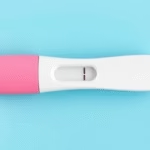Understanding Implantation Bleeding and Menstrual Periods
When navigating the complexities of women’s health, understanding the distinction between implantation bleeding and a menstrual period is essential. Both phenomena involve vaginal bleeding but differ significantly in origin, timing, and characteristics. Implantation bleeding occurs when a fertilized egg attaches to the uterine lining, typically occurring 6 to 12 days after conception. In contrast, a menstrual period is a regular monthly cycle where the body sheds the uterine lining due to the absence of fertilization. Recognizing these differences can help women identify their reproductive health status, guiding them in making informed decisions regarding pregnancy or other health matters.
Being able to distinguish between these two types of bleeding can be crucial for identifying early pregnancy signs or understanding menstrual health. Symptoms, duration, and accompanying factors further differentiate these occurrences. Knowing these details can aid in recognizing normal versus concerning patterns in reproductive health.
What is Implantation Bleeding?
Implantation bleeding is often one of the earliest signs of pregnancy and can confuse many women. This type of bleeding occurs when a fertilized egg implants itself into the uterine lining. Typically, implantation bleeding occurs around 6 to 12 days after ovulation and fertilization, coinciding closely with the time a woman might expect her next menstrual period.
The characteristics of implantation bleeding include:
- Light Flow: Implantation bleeding tends to be lighter than a menstrual period.
- Color Variation: It may appear pinkish or brown instead of the bright red associated with menstrual bleeding.
- Short Duration: This type of bleeding typically lasts a few hours to a couple of days.
It is important for women to consider the timing of this bleeding in relation to their menstrual cycle, as it can provide clues to their reproductive health.
Characteristics of Menstrual Periods
A menstrual period is part of the regular cycle of a woman’s reproductive system, usually occurring every 21 to 35 days, depending on the individual’s body. During menstruation, the body sheds the thickened lining of the uterus prepared for a fertilized egg. If no fertilization occurs, a period is the body’s way of resetting for the next cycle.
Key characteristics of menstrual periods include:
- Regular Timing: Most women can predict their periods based on a consistent cycle.
- Medium to Heavy Flow: Period bleeding is usually heavier than implantation bleeding.
- Duration: Menstrual periods generally last from 3 to 7 days.
- Cramps and Symptoms: They may accompany discomfort, including cramps, headaches, and mood swings.
Understanding these characteristics can help women track their menstrual health and recognize any irregularities in their cycles.
Timing: When to Expect Each Event
The timing of both implantation bleeding and menstrual periods is critical for distinguishing between the two. As mentioned, implantation bleeding occurs roughly a week after conception. Menstrual bleeding, on the other hand, follows a regular cycle. A woman who is actively trying to conceive may notice implantation bleeding around the time she expects her period, which can contribute to confusion.
For women with regular cycles, implantation bleeding is likely to occur around day 20 to day 26 of their cycle, depending on the length of their cycle. Thus, tracking one’s cycle can help in recognizing patterns that indicate whether one is experiencing an early pregnancy sign or just their period. Keeping a journal or using apps can aid in identifying these cycles over time.
Appearance and Color Differences
The appearance and color of the bleeding can also be a helpful distinguishing factor. Implantation bleeding is typically lighter and may be a pink or brown shade as opposed to the bright red associated with menstrual bleeding. While menstruation may include small clots, implantation bleeding is usually devoid of such characteristics.
These visual cues can be helpful for those attempting to determine the nature of their bleeding. Women experiencing any form of unusual bleeding should also consider consulting a healthcare provider for professional guidance, especially if the bleeding is accompanied by other symptoms.
Cramps and Other Symptoms
Cramps and additional symptoms can help differentiate between implantation bleeding and a menstrual period. While many women experience cramps during their periods, implantation bleeding might present with minimal discomfort or cramping. If cramping is present with implantation bleeding, it tends to be milder compared to menstrual cramps.
Furthermore, there may be other signs accompanying either occurrence. Early signs of pregnancy may include nausea, breast tenderness, and fatigue, while menstrual symptoms may include mood swings and bloating. Often, women experience both sets of symptoms in relation to their cycles, making awareness of one’s body even more critical.
What To Do If You Are Unsure
If a woman experiences unexpected bleeding and is unsure whether it is menstrual or implantation bleeding, there are steps to take for clarification. Firstly, monitoring the bleeding over a day or two can provide insights into its nature. If the bleeding persists beyond a couple of days or is accompanied by severe pain, seeking medical advice is vital.
Another option is to take a home pregnancy test if the bleeding occurs around the time a period is expected. Most tests are accurate approximately one week after a missed period, providing clarity for those uncertain about their bleeding. Consulting with a healthcare professional can also provide reassurance and advice tailored to individual circumstances.
Final Thoughts
Understanding the differences between implantation bleeding and menstrual periods can significantly impact a woman’s understanding of her reproductive health. Recognizing when these events occur, their characteristics, and the accompanying symptoms can be essential for those trying to conceive or tracking hormonal health. Proper tracking of menstrual cycles, attention to the characteristics of the bleeding, and taking proactive steps can aid in managing reproductive health.
Should uncertainty arise when facing unusual bleeding, it is essential not to hesitate in seeking medical advice, as this can clarify health status and ensure peace of mind. Being informed about one’s body and its changes is a crucial step in making empowered health choices. It is vital to stay proactive about reproductive health and be aware of the subtle signals the body sends as it navigates hormonal and physical changes.
Frequently Asked Questions
-
How long does implantation bleeding last?
Implantation bleeding usually lasts a few hours to a couple of days.
-
Can I take a pregnancy test during implantation bleeding?
It is advisable to wait until at least a week after a missed period for the most accurate results.
-
What are the color differences between implantation bleeding and a period?
Implantation bleeding tends to be light pink or brown, while menstrual blood is usually bright red.
-
Is cramping normal during implantation bleeding?
Some women may experience slight cramping, but it is typically much milder than period cramps.
-
Should I consult a doctor if I experience unusual bleeding?
Yes, it is essential to consult a healthcare professional for any unusual or concerning bleeding.
Further Reading
What Type of Psychotherapy Is Best for Anxiety?







